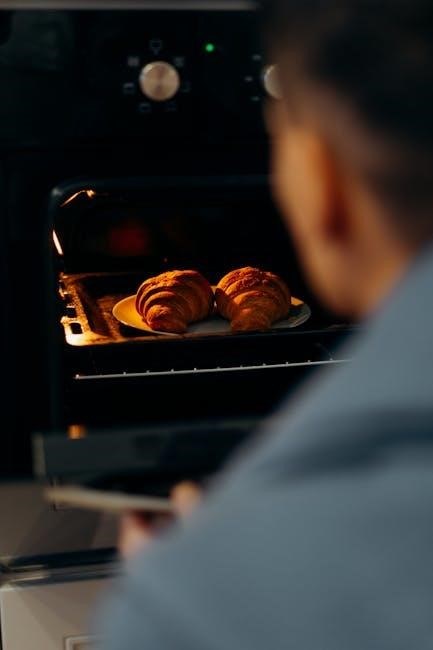Warmup is a UK-based manufacturer specializing in premium underfloor heating solutions for over 20 years, offering efficient and comfortable heating systems for various spaces, ensuring energy efficiency and warmth․
Overview of Warmup as a Leading Manufacturer
Warmup, a UK-based manufacturing company, has been a pioneer in underfloor heating solutions for nearly 20 years․ Renowned for their innovative, research-driven approach, Warmup offers high-quality, proprietary products that cater to diverse heating needs․ Their extensive range includes both electric and hydronic systems, designed for efficiency and comfort․ With a strong commitment to customer satisfaction, Warmup provides comprehensive manuals and installation guides, ensuring seamless setup and operation․ Their systems are celebrated for their reliability, energy efficiency, and longevity, making Warmup a trusted name in the industry․ By focusing on cutting-edge technology and user-friendly designs, Warmup continues to lead the market in underfloor heating solutions․
Benefits of Underfloor Heating Systems
Underfloor heating systems offer numerous advantages, including even heat distribution, energy efficiency, and reduced operating costs․ They eliminate the need for radiators, freeing up wall space and enhancing interior design flexibility․ By providing warmth from the floor up, they create a more comfortable living environment․ These systems are also quieter and produce less dust, making them ideal for allergy sufferers․ Additionally, underfloor heating can be easily integrated with various floor types, such as tiles or wood, and works seamlessly with smart thermostats for precise temperature control․ Overall, underfloor heating systems provide a modern, efficient, and comfortable heating solution for homes and businesses alike․
Types of Underfloor Heating Systems
Underfloor heating systems are primarily categorized into electric and hydronic systems․ Electric systems use heating mats or cables, while hydronic systems circulate warm water through pipes, each offering unique benefits․
Electric Underfloor Heating
Electric underfloor heating systems are popular for their quick warm-up times and ease of installation․ They use heating mats or cables placed under the floor, ideal for bathrooms, kitchens, and living areas․ These systems are energy-efficient and provide consistent heat distribution․ Installation involves laying the heating elements next to the Warmup thermostat, ensuring proper coverage and connectivity․ Maintenance is minimal, but regular checks are recommended to ensure optimal performance․ The Warmup manual advises allowing 7-10 days for the floor to fully heat up after installation․ Electric systems are versatile and suitable for various floor types, making them a preferred choice for many homeowners seeking a modern, low-maintenance heating solution․

Hydronic Underfloor Heating
Hydronic underfloor heating systems circulate warm water through pipes installed beneath the floor, providing consistent and energy-efficient heat․ These systems are ideal for larger spaces and can be powered by boilers or heat pumps․ The Warmup manual highlights the importance of proper installation, including precise piping layouts and insulation to maximize efficiency․ Hydronic systems are known for their long-term cost savings and suitability for low-temperature heat sources․ They require regular maintenance, such as checking for leaks and ensuring optimal water flow․ While installation is more complex than electric systems, hydronic underfloor heating offers superior performance and adaptability for various heating needs, making it a preferred choice for many homeowners seeking a reliable, high-efficiency solution․

Installation Considerations
Proper preparation, including subfloor assessment and insulation, is essential for efficient underfloor heating․ Floor coverings like tiles are recommended, while carpet and wood may require additional considerations․ Thermostat placement and wiring must be planned carefully to ensure optimal performance and safety, as outlined in the Warmup manual․
Preparation and Floor Coverings
Before installing Warmup underfloor heating, ensure the subfloor is level, dry, and free from debris․ Insulation is crucial to improve efficiency and reduce heat loss․ The choice of floor coverings significantly impacts performance; ceramic, quarry, or natural stone tiles are ideal due to their high thermal conductivity․ Avoid using thick carpets or wood, as they can hinder heat distribution․ Always follow the Warmup manual guidelines for specific flooring compatibility․ Proper preparation ensures even heat distribution and extends system longevity, while unsuitable floor types may lead to inefficient heating and potential system damage․
Thermostat Placement and Wiring Requirements
Proper placement and wiring of the thermostat are critical for optimal performance․ The Warmup thermostat must be installed by a qualified electrician, requiring a permanent 230 V AC supply from a 30mA RCD or RCBO protected circuit․ It should be placed inside the heated room to accurately sense temperature and avoid interference from external heat sources like radiators or direct sunlight․ Wiring must adhere to the Warmup manual instructions to ensure safe and efficient operation․ Incorrect installation can lead to inefficient heating or safety risks․ Always follow the guidelines to achieve reliable temperature control and system longevity․ Proper placement ensures even heating distribution and energy efficiency, while adhering to wiring requirements guarantees safety and performance․

Thermostat Setup and Usage
The Warmup thermostat simplifies temperature control with user-friendly interfaces․ It offers manual mode for fixed settings and integrates with smartphone apps for remote adjustments, ensuring efficient heating management․
Manual Mode and Temperature Control

Manual mode allows users to set a fixed target temperature, ensuring consistent heat levels․ The thermostat maintains this temperature, providing easy control over the heating system․ This mode is ideal for spaces requiring steady warmth without the need for programming․ By enabling manual operation, users can override programmed schedules, offering flexibility in managing their comfort․ The interface is intuitive, making it simple to adjust settings as needed․ This feature is particularly useful for areas with varying heating requirements, ensuring optimal temperature management without complex adjustments․ Manual mode complements programmable functions, offering a straightforward solution for immediate temperature control․
Smartphone App Integration for Remote Control
The MyHeating app enables seamless remote control of Warmup underfloor heating systems․ Users can adjust temperatures, program schedules, and monitor their system from anywhere․ Geofencing technology automatically starts heating when approaching home․ Real-time energy monitoring and notifications ensure optimal performance․ Compatible with smart home systems, the app offers voice control through assistants like Alexa․ This integration enhances convenience, allowing users to manage their heating effortlessly․ The app also provides detailed energy usage reports, helping users optimize consumption․ With remote access, users can ensure their home is warm upon arrival or adjust settings when plans change․ This feature is a significant advancement in heating system control and energy efficiency, making it a standout option for modern homes․ The app is available for both iOS and Android devices, ensuring widespread accessibility and ease of use․

Maintenance and Troubleshooting
Regular checks for leaks, ensuring proper water pressure, and cleaning heat exchangers are essential․ Refer to error codes for troubleshooting; reset systems or seek professional help for major issues․

Regular Maintenance Tips
Regular maintenance ensures optimal performance and longevity of your Warmup underfloor heating system․ Check for leaks in hydronic systems and ensure proper water pressure․ Clean heat exchangers and pumps annually to prevent dust buildup․ For electric systems, inspect cables for damage and verify thermostat connections․ Always use compatible materials for repairs to avoid damage․ Maintain consistent water temperatures in hydronic systems to prevent corrosion․ Test the system monthly during colder months to ensure functionality․ Keep thermostats updated with the latest software for smart models․ Refer to the Warmup manual for specific guidance tailored to your system type․
Common Issues and Solutions

Common issues with underfloor heating systems can often be resolved with simple checks․ Uneven heating may result from improper installation or blocked heat distribution, requiring adjustment of thermostats or floor coverings․ If the system fails to heat, check the power supply, thermostat settings, and wiring connections․ Leaks in hydronic systems can cause reduced performance; inspect pipes annually and repair promptly․ For electric systems, ensure mats are undamaged and correctly spaced․ If the thermostat isn’t responding, reset it or update its software․ Refer to the Warmup manual for troubleshooting guides specific to your system․ Regular inspections and timely repairs can prevent major issues and extend system lifespan․